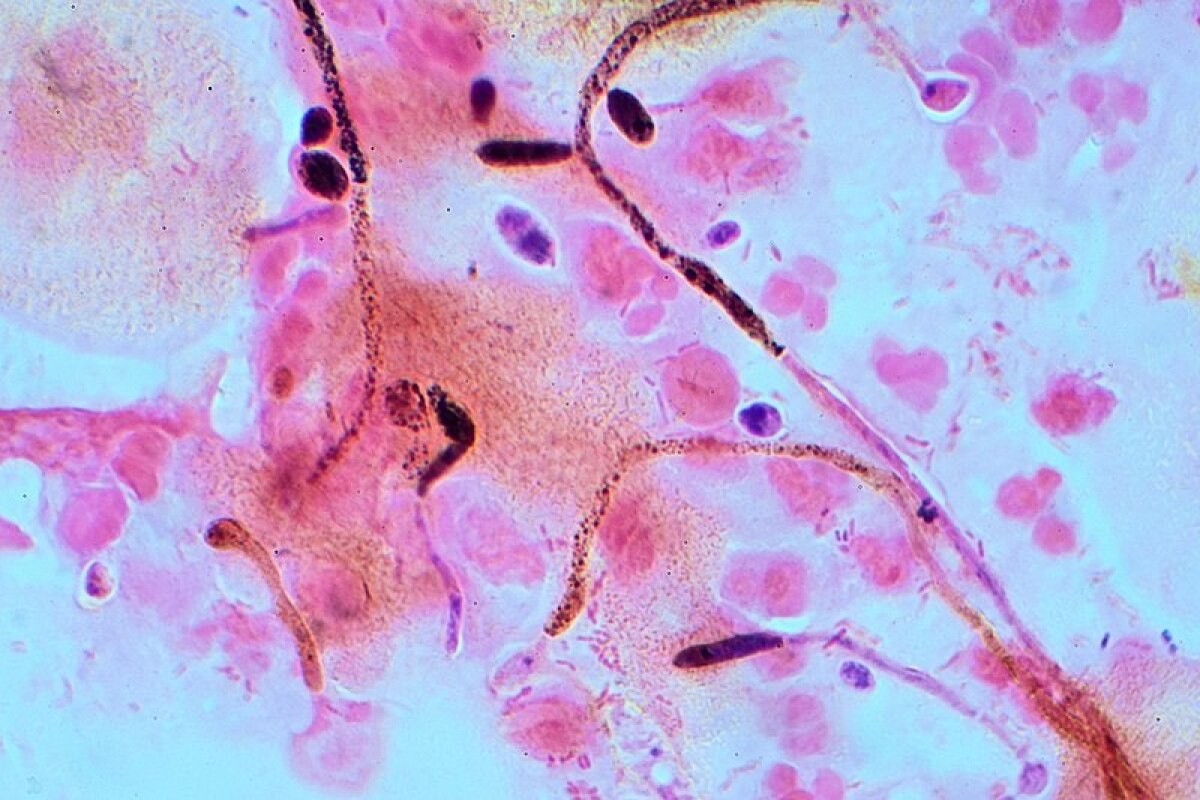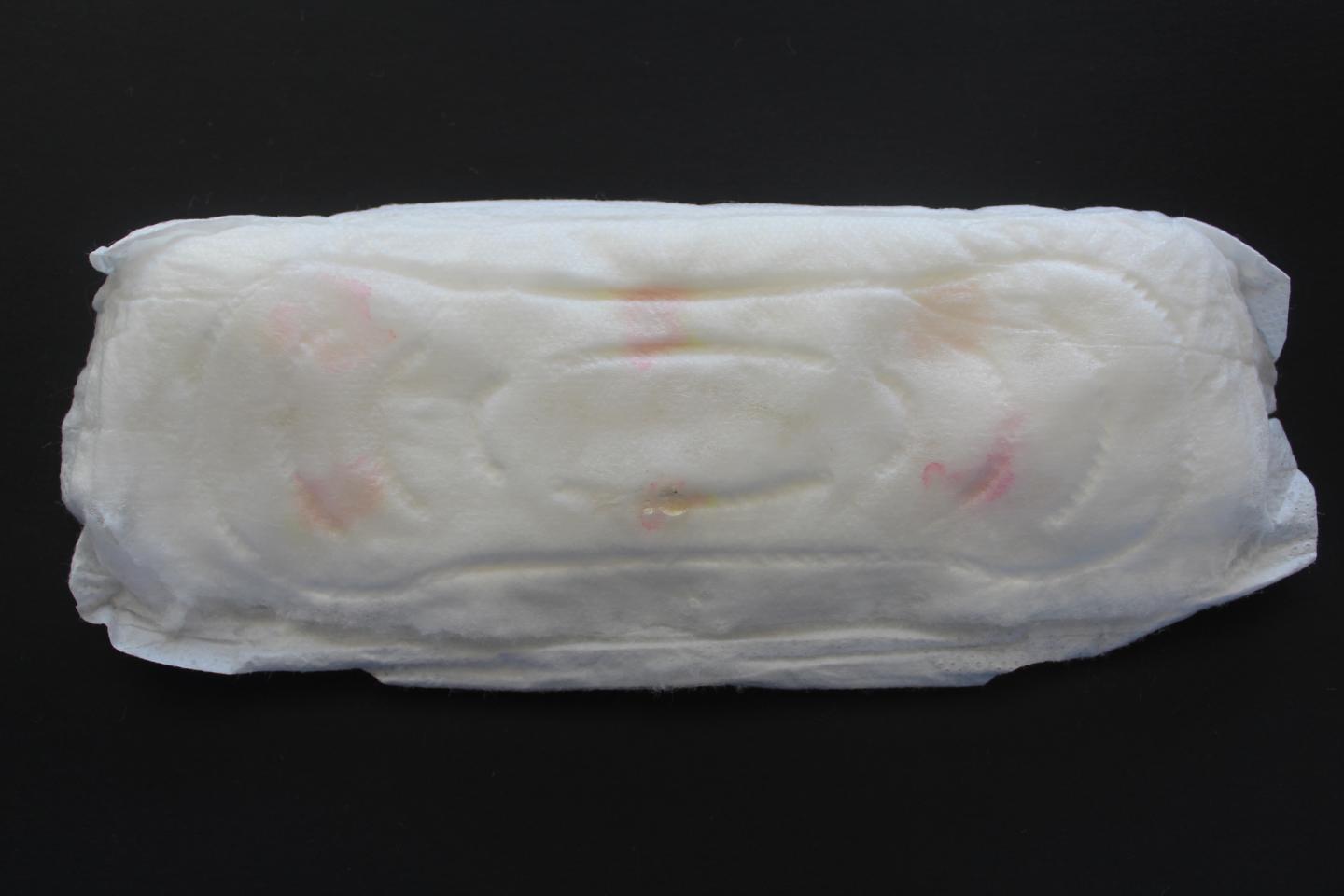"Smart" tampons and pads could detect yeast infections
By Ben Coxworth
May 19, 2021

Stained Candida albicans from a vaginal swab – C. albicans is a yeast, which is in turn a type of fungus
Graham Beards/C.C. 4.0
Although women in First World countries are routinely diagnosed with and treated for vaginal yeast infections, doing so isn't always possible for their counterparts in impoverished nations. New fungus-detecting hygiene products, however, could make things much easier.
There are at least two challenges for women living in poor countries, who suspect they might have a yeast infection. For starters, they may lack access to healthcare facilities where a vaginal swab could be taken and antifungal medicine could be dispensed. Additionally, societal taboos may prevent them from telling other people about their symptoms.
With these limitations in mind, a team of Indian scientists set out to develop tampons and sanitary napkins that would allow users to self-diagnose such infections. Led by Dr. Naresh Kumar Mani from the Manipal Institute of Technology, the researchers started with store-bought multifilament cotton threads. A heptane solution was used to remove the existing waxes and binders from those threads, increasing their wicking capabilities.
Next, the threads were coated with a molecule known as L-proline β-naphthylamide, which binds with an enzyme secreted by the infection-causing Candida albicans yeast. Those coated threads were then embedded in specific spots within the inner layers of ordinary tampons and napkins.

One of the experimental napkins, with its color-changing spots
Adapted from ACS Omega 2021, DOI: 10.1021/acsomega.1c00806
When simulated vaginal fluid spiked with C. albicans and an indicator solution was applied to those items, the thread-containing spots reacted to the presence of the yeast by turning bright pink. What's more, they did so within only 10 minutes of exposure – by contrast, lab tests typically take 24 to 72 hours to provide results.
The scientists state that the technology should only cost about 22 to 28 cents per tampon or napkin. Additionally, it could be adapted to check for other problems, such as urinary tract infections.
The study is described in a paper that was recently published in the journal ACS Omega.
Source: American Chemical Society
May 19, 2021

Stained Candida albicans from a vaginal swab – C. albicans is a yeast, which is in turn a type of fungus
Graham Beards/C.C. 4.0
Although women in First World countries are routinely diagnosed with and treated for vaginal yeast infections, doing so isn't always possible for their counterparts in impoverished nations. New fungus-detecting hygiene products, however, could make things much easier.
There are at least two challenges for women living in poor countries, who suspect they might have a yeast infection. For starters, they may lack access to healthcare facilities where a vaginal swab could be taken and antifungal medicine could be dispensed. Additionally, societal taboos may prevent them from telling other people about their symptoms.
With these limitations in mind, a team of Indian scientists set out to develop tampons and sanitary napkins that would allow users to self-diagnose such infections. Led by Dr. Naresh Kumar Mani from the Manipal Institute of Technology, the researchers started with store-bought multifilament cotton threads. A heptane solution was used to remove the existing waxes and binders from those threads, increasing their wicking capabilities.
Next, the threads were coated with a molecule known as L-proline β-naphthylamide, which binds with an enzyme secreted by the infection-causing Candida albicans yeast. Those coated threads were then embedded in specific spots within the inner layers of ordinary tampons and napkins.

One of the experimental napkins, with its color-changing spots
Adapted from ACS Omega 2021, DOI: 10.1021/acsomega.1c00806
When simulated vaginal fluid spiked with C. albicans and an indicator solution was applied to those items, the thread-containing spots reacted to the presence of the yeast by turning bright pink. What's more, they did so within only 10 minutes of exposure – by contrast, lab tests typically take 24 to 72 hours to provide results.
The scientists state that the technology should only cost about 22 to 28 cents per tampon or napkin. Additionally, it could be adapted to check for other problems, such as urinary tract infections.
The study is described in a paper that was recently published in the journal ACS Omega.
Source: American Chemical Society
No comments:
Post a Comment